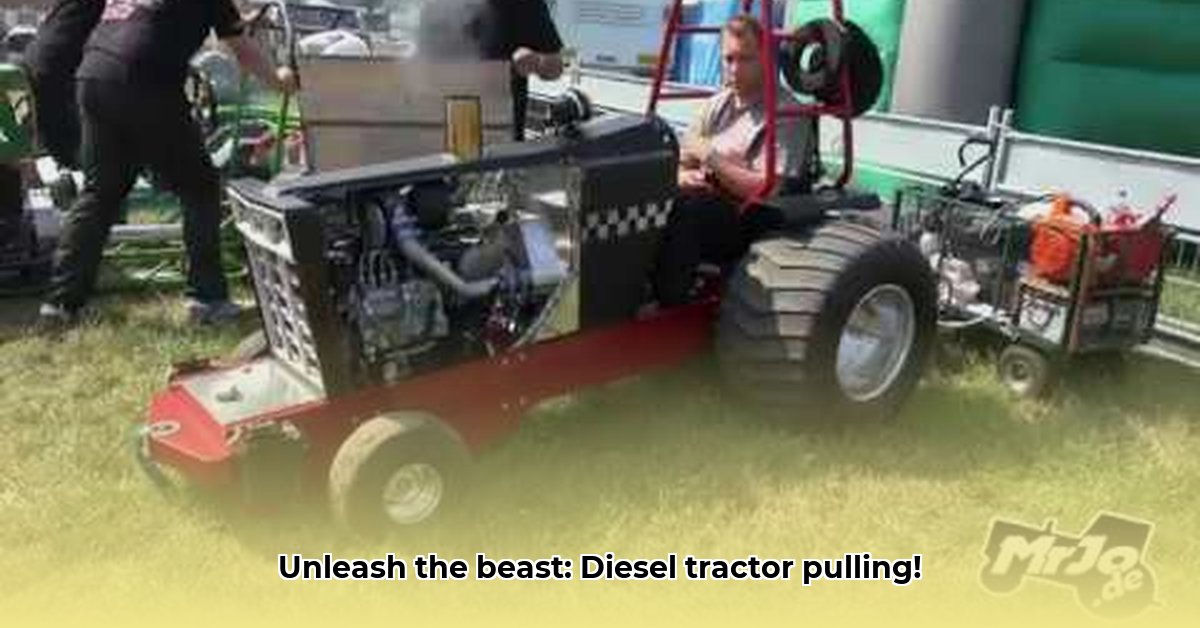
Want to transform your garden tractor into a pulling champion? This comprehensive guide provides step-by-step instructions and expert advice on modifying your diesel garden tractor for competitive pulling. We'll cover engine upgrades, transmission tweaks, and rear-end configurations, along with essential safety precautions and troubleshooting tips. Get ready to unleash your tractor's full potential! For more engine information, check out this helpful resource: engine specs.
Understanding the Fundamentals of Diesel Garden Tractor Pulling
Diesel garden tractor pulling is a competition testing the pulling power of modified garden tractors. Success hinges on a combination of raw engine power, efficient power transmission, and optimal traction. Three key systems are paramount: the engine, the transmission, and the rear-end. Understanding each is critical for effective modifications.
- Engine: The heart of the machine, responsible for generating power. Modifications focus on increasing power output and efficiency.
- Transmission: Responsible for transferring engine power to the wheels. Gear ratio adjustments significantly impact pulling performance. Lower gears provide more torque (pulling power), while higher gears offer greater speed (often at the expense of torque).
- Rear-End: This component's role is crucial in transferring power to the ground for maximum traction. Modifications often involve differential modifications.
Common Modifications for Enhanced Pulling Power
Several modifications can significantly boost your tractor's pulling power. Each modification carries potential advantages and drawbacks, requiring careful consideration of your specific needs and competition rules.
Engine Upgrades: Unleashing Your Tractor's Power
Engine upgrades focus on increasing fuel delivery and airflow to boost power output. However, these alterations often demand additional modifications to ensure safe and reliable operation. Improper modifications can lead to engine damage.
| Modification | Pros | Cons |
|---|---|---|
| Upgraded Fuel Injectors | Increased fuel delivery per stroke, leading to higher power output. | Increased fuel consumption and potential for increased engine wear. |
| High-Flow Fuel Pump | Consistent fuel supply even under heavy load. | Higher cost and potentially reduced lifespan. |
| Turbocharger | Substantial power increase and improved fuel efficiency at higher RPMs. | Significantly increases engine stress, necessitating additional modifications and careful tuning. |
Transmission Tweaks: Optimizing Gear Ratios
Adjusting gear ratios tailors your tractor to the demands of pulling competitions. Lower ratios maximize pulling power but reduce speed, while higher ratios prioritize speed. Finding the optimal balance requires careful consideration and experimentation.
Rear-End Reconfiguration: Mastering Traction
The rear-end setup directly impacts traction. A locked differential provides maximum traction but limits maneuverability. An unlocked differential improves maneuverability but sacrifices some traction. Selection depends on the specific terrain and competition rules.
Step-by-Step Guide: Turbocharger Installation
Installing a turbocharger significantly boosts power but is a complex undertaking requiring mechanical expertise. This is a simplified overview; always consult with a qualified mechanic before proceeding.
- Safety First: Disconnect the battery, wear safety glasses and gloves, and work in a well-ventilated area. Failure to do so could result in serious injury or damage.
- Preparation: Gather all necessary tools, parts, gaskets, and the turbocharger kit's installation manual.
- Mounting: Carefully mount the turbocharger, ensuring precise alignment and secure connections.
- Plumbing: Connect intake and exhaust piping securely. Double-check all clamps and connections to prevent leaks.
- Wiring (If Necessary): Some turbochargers require additional wiring.
- Testing and Calibration: Monitor boost pressure with a gauge and adjust settings as needed. This ensures optimal performance and prevents engine damage.
Sourcing Parts and Resources
Finding reliable parts is crucial. Online forums dedicated to tractor pulling (https://www.tractorbynet.com/forums/threads/diesel-garden-tractor-pulling.150985/), agricultural supply stores, and salvage yards are all potential sources. Networking with experienced pullers can also prove invaluable.
Troubleshooting and FAQs
Remember to keep detailed records of all modifications. Common problems often stem from installation errors or faulty components. Start with simple checks, and if stuck, seek advice from online forums or qualified mechanics.
Safety Considerations
Safety is paramount throughout the modification process. Always wear appropriate safety gear and prioritize safe working practices. Remember, no upgrade is worth risking your health or safety.
Conclusion: The Continuous Pursuit of Pulling Power
Modifying your diesel garden tractor for pulling is an ongoing process of learning, refinement, and optimization. Consistent experimentation, a commitment to safety, and engagement with the tractor pulling community are key to sustained success. Good luck, and happy pulling!